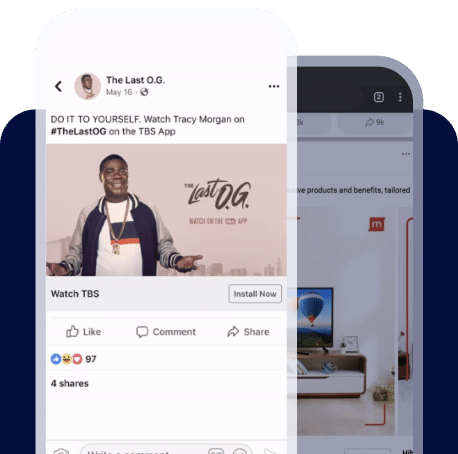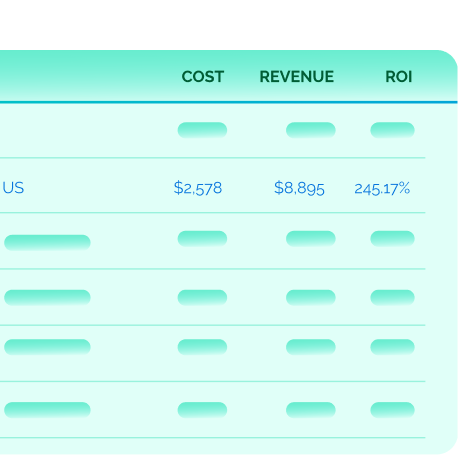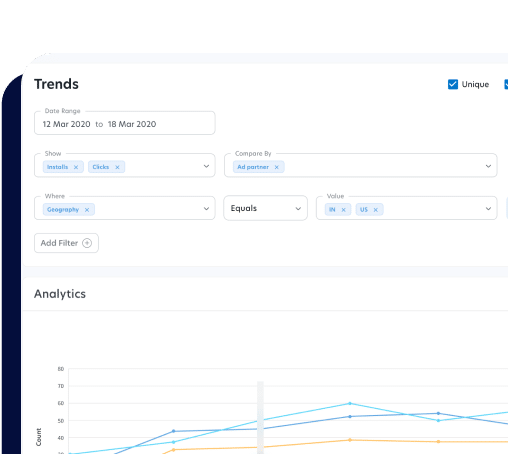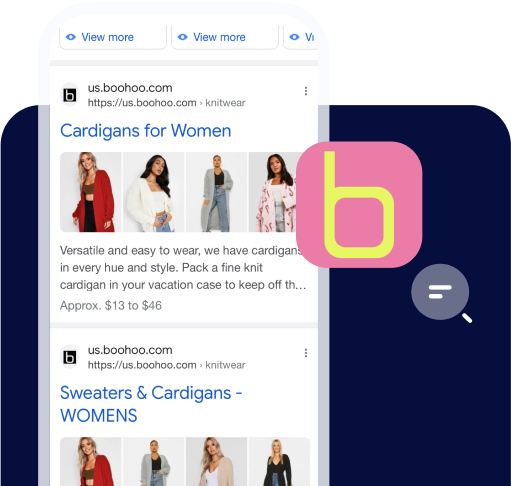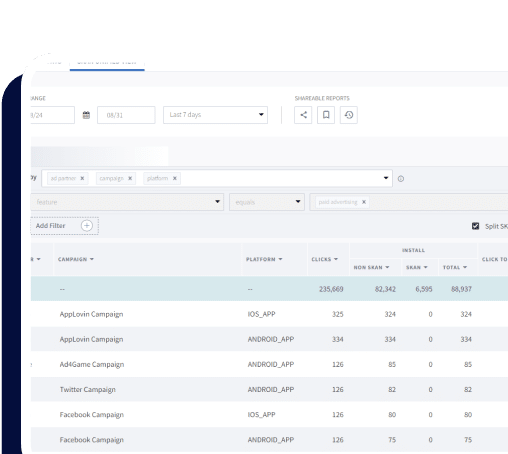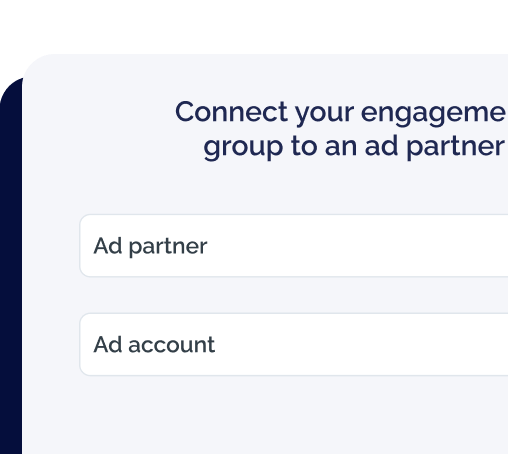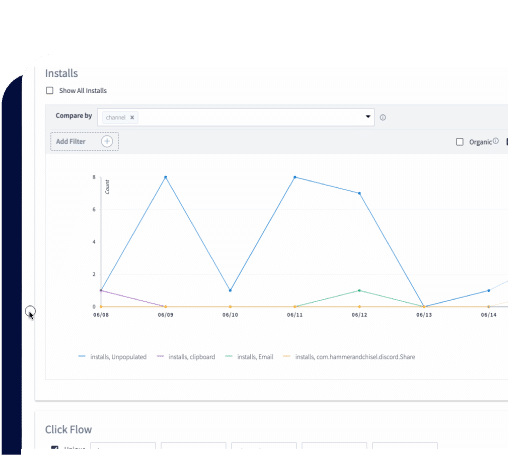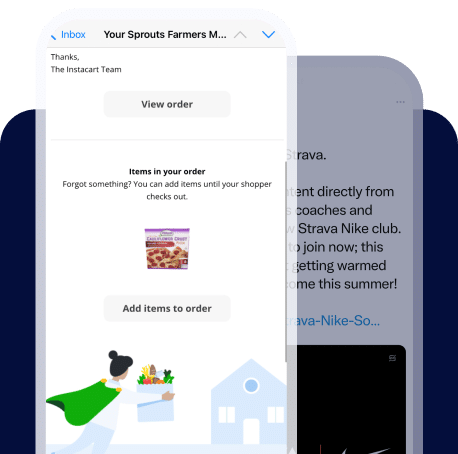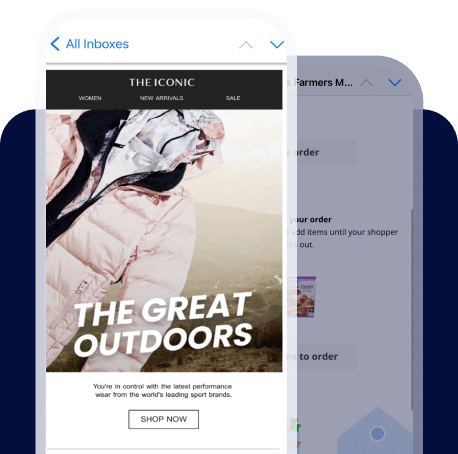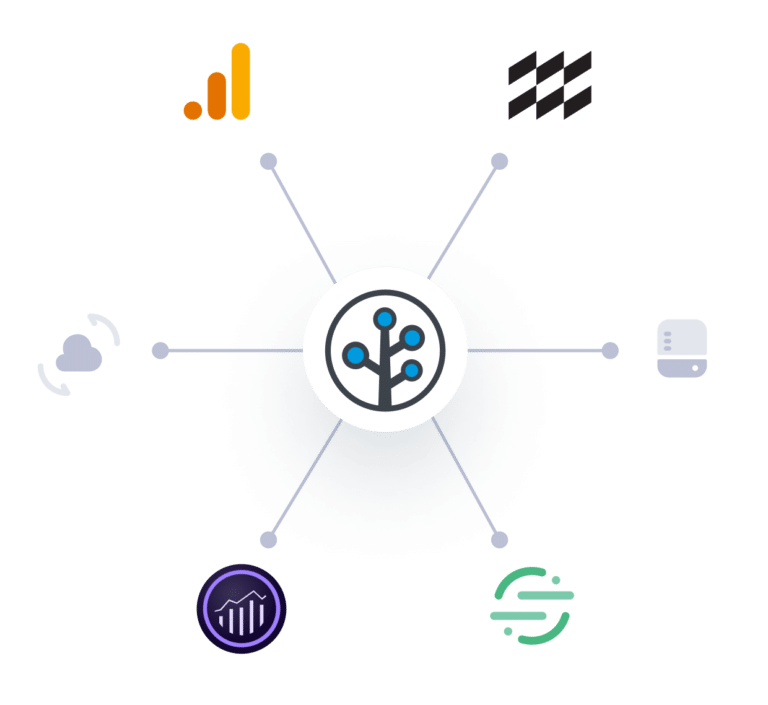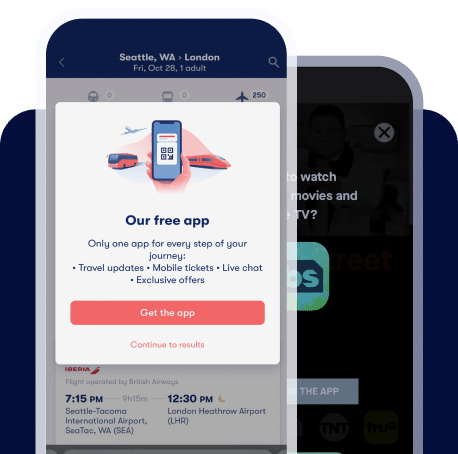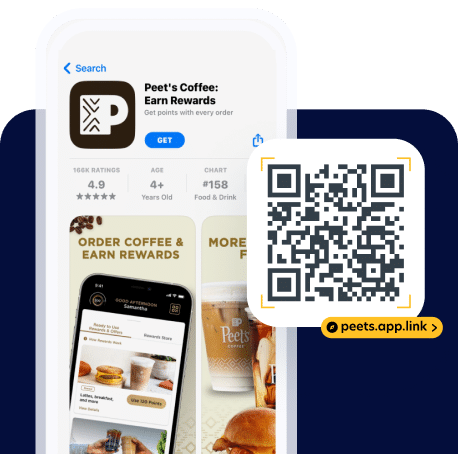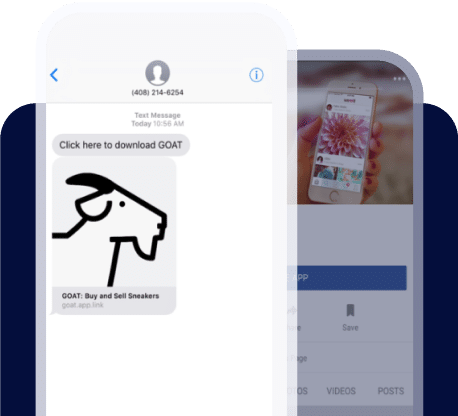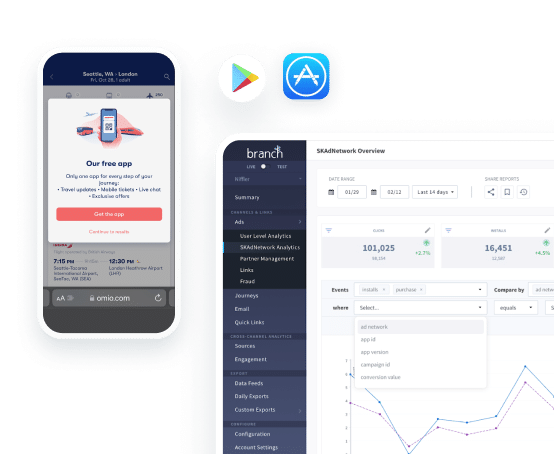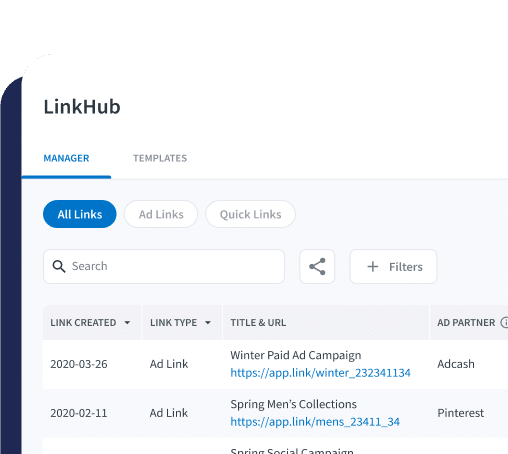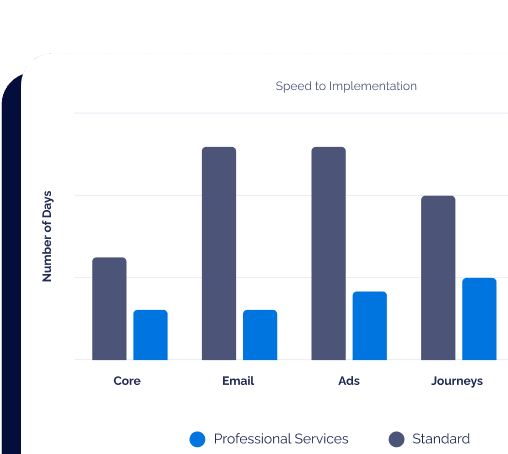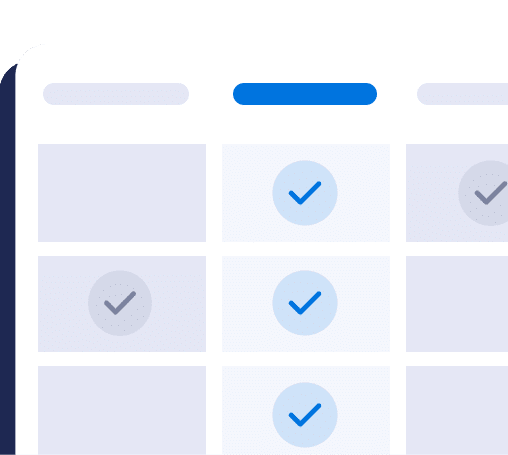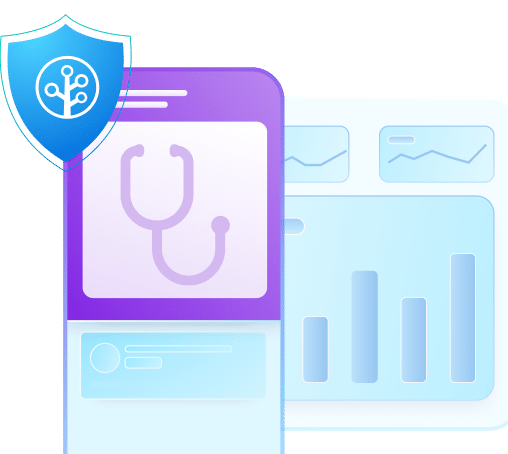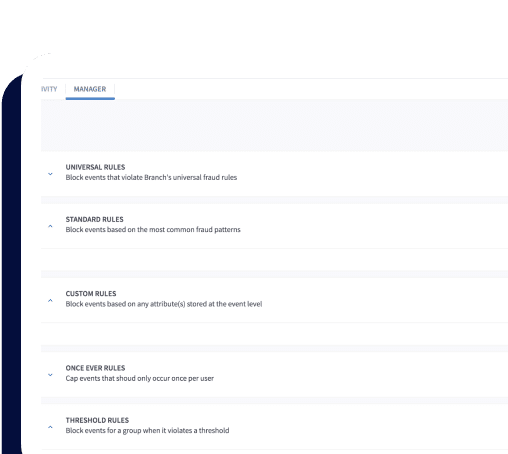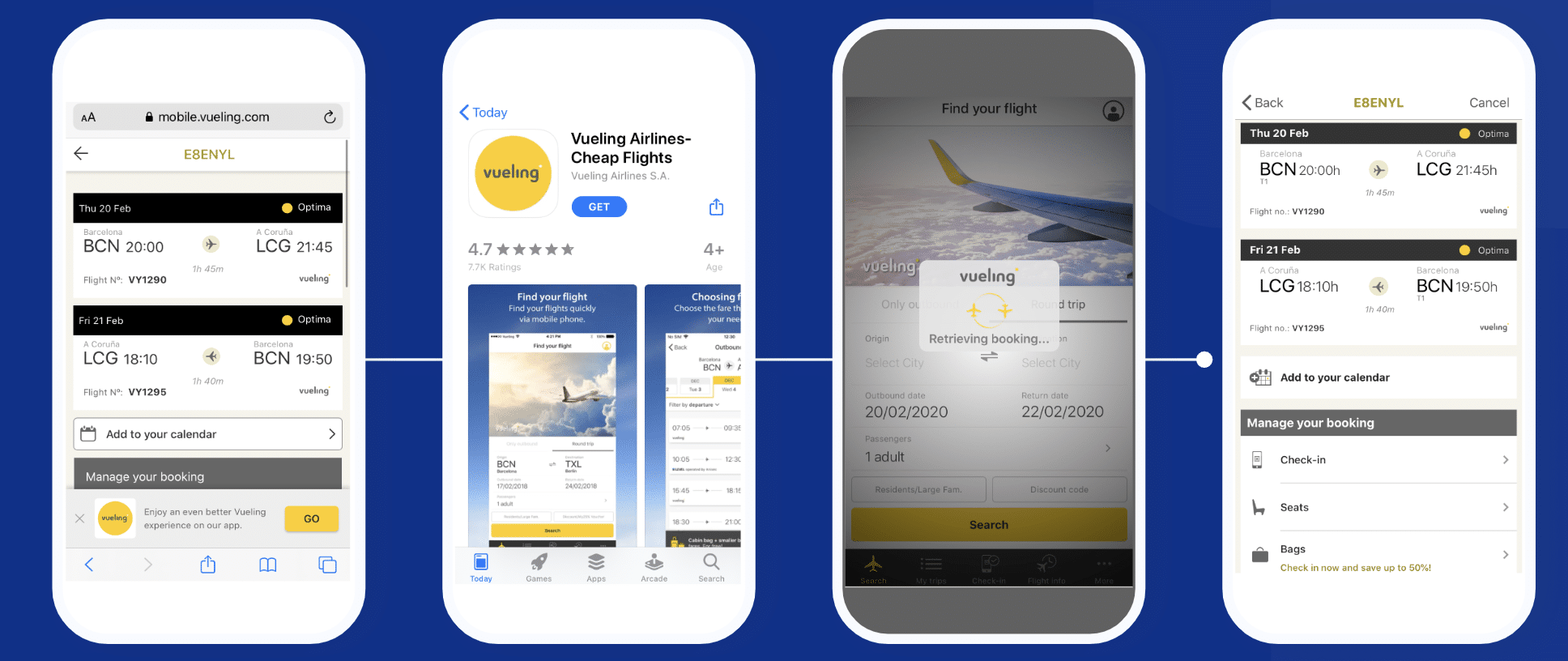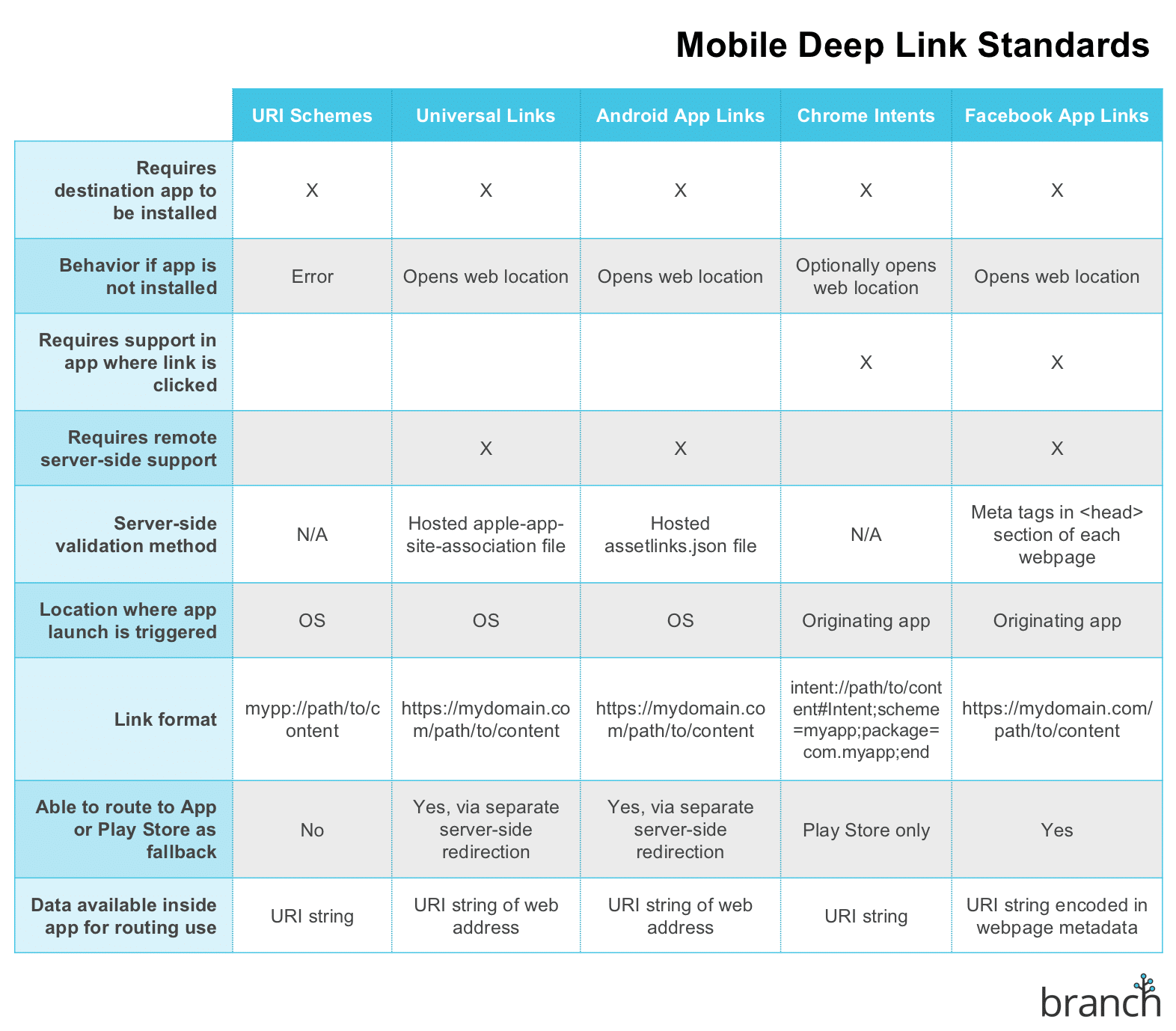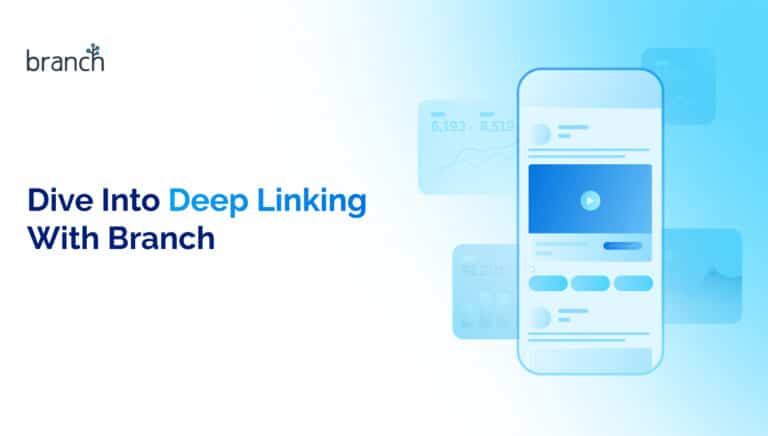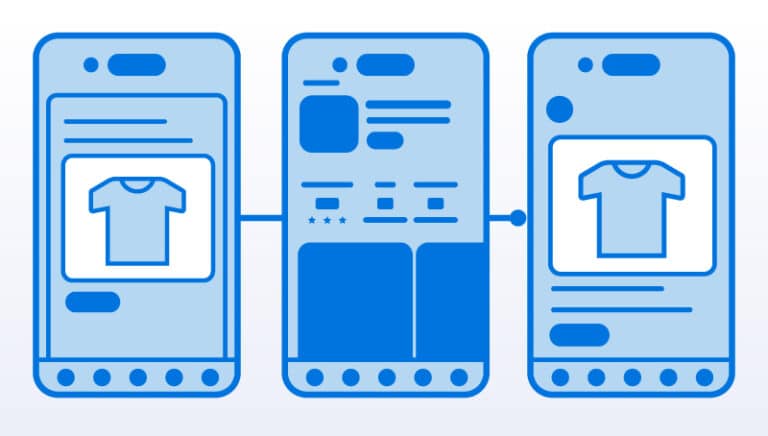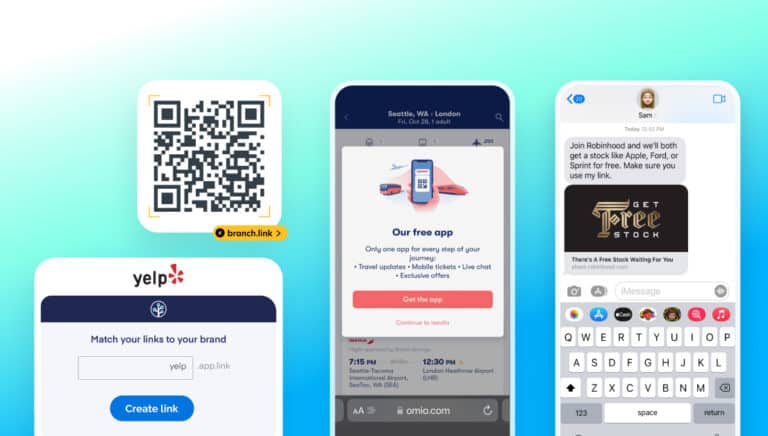What is deep linking?
Deep linking seamlessly guides users from a link to a specific location within a downloaded app, enabling swift transitions from email, web, social media, and other marketing channels to desired in-app content. This technology transforms user engagement by directly connecting them to specific app pages, enhancing user experiences and facilitating desired interactions.
Although it may sound complicated, the concept of deep linking is actually fairly straightforward. Just as a normal web link takes you to a specific page on a website, a deep link takes you directly to a particular section or functionality within a mobile app.
Here’s an example: You click on a mobile ad for a pair of shoes, and the link takes you straight to that product page on the retailer’s app. Because you bypass the app’s home screen and go immediately to the content you want to see, you enjoy an enhanced user experience.
The benefits of deep linking aren’t just for users, though. By optimizing the user experience, they improve engagement and conversion rates and yield better results for mobile marketing campaigns.
The result? Deep links give marketers and mobile growth leaders a tool to boost user interaction and mobile user retention rates, ultimately helping the app succeed in the highly competitive mobile market.
Enhanced user experience
Mobile deep links can lead to significant improvements in an app’s performance. Here are some ways deep linking enhances the user experience and optimizes campaign results.
- Seamless navigation to app content: Sometimes users want to enter a mobile app through the home screen so they can see all that the app offers. Other times, though, when they click through an ad, email, or social media post to look at specific content, they’d rather go straight to the specific in-app location they want. Because deep linking enables seamless transitions from external sources like websites or advertisements to targeted content, it removes the necessity for manual searching. Manual navigation can be a frustrating experience for users, so bypassing it tends to lead to higher engagement and satisfaction.
- Higher user acquisition: By guiding users to relevant content from so many different channels, deep linking makes it easier for brands to route users to their app and therefore, boosts user acquisition rates.
- Increased conversion rates: Because deep links deliver better user experiences, users are more likely to engage with the app and all its features. In turn, this helps improve user loyalty. And, because deep links guide users directly to relevant content or actions, they increase the likelihood of conversions while also reducing churn rates, ultimately helping drive the overall success of an app.
- Elevated mobile user retention and engagement: Deep links enable personalized user journeys by directing users to specific content tailored to their interests or past interactions, enhancing relevance and engagement. They achieve this by storing data in URL parameters, which allows the app to deliver customized experiences based on the user’s previous behavior or preferences. This leads to higher retention rates over time, and because engaging with the app in a meaningful way takes less effort, users develop a stronger connection to the app.
Deferred deep linking
What if the user doesn’t have the app installed yet? Deferred deep links can bridge that gap and ensure a seamless transition from app discovery to content access. Here’s how it works.
If users don’t have the app installed, deferred deep linking will direct users to the app store where they download the app. After installation, users are seamlessly directed to the specific piece of content or location they originally wanted within the app.
Here’s an example. A traveler on the Vueling website, a low-cost Spanish airline, who wants to manage their reservation clicks on the mobile smart banner at the bottom of the homepage or reservation page. Because they don’t yet have the app, they are taken to the app store to download. After installation, the reservation automatically opens, allowing users to seamlessly manage it. Additionally, they gain access to a range of convenient app features, enhancing their overall experience.
The smooth transition created by deferred deep links offers an uninterrupted user interaction. This effectiveness makes them invaluable for promotional campaigns and referral programs, enabling marketers and app developers to engage new audiences with minimal disruptions in the customer journey.
Mobile deep linking
Mobile deep linking can encompass both app deep linking, which is linking to specific content within a mobile app, and deep web linking, which means embedding hyperlinks within web pages that direct desktop or mobile users to specific sections within a site.
App deep linking
App deep linking offers opportunities for enhanced engagement because it unlocks direct pathways to specific in-app content. With this technology, users get immediate access to the most relevant and engaging features or information. This not only streamlines navigation but also encourages users to explore all app features.
Deep web linking
In contrast, deep web links facilitate seamless transitions between web and app environments, enriching the user experience and promoting cross-platform engagement. This continuity enhances engagement while driving app adoption and usage.
Linking challenges
For marketers and mobile growth leaders, understanding and enabling sophisticated user journeys can be challenging. You likely have an idea of the ideal journey you want users to take and the action you want them to perform, but how do you actually get users to accomplish that conversion or engagement moment?
It’s challenging because there are so many different marketing channels that all function differently and have unique quirks and rules. Plus, many teams are vying to execute different goals while also trying to deliver a cohesive experience across all of these touchpoints.
Then comes the challenge linking users to the right place across multiple device types, a whole different beast. Tackling this on your own is no small feat, demanding significant development time, compliance risk, and thousands of edge cases. Even after overcoming these hurdles, it’s surprising how many experiences break and how often one small change in the ecosystem can set you back to square one.
Integrating deep links into marketing campaigns
Deep links give marketers a way to overcome the challenges associated with complex user journeys. By enabling seamless transitions from various marketing channels to relevant in-app content, they ensure a frictionless user experience — something today’s users have come to expect. By leveraging deep links in omni-channel campaigns, marketers can increase conversion rates, user retention, and engagement, resulting in a more impactful campaign.
Now that you understand how deep links work, it’s time to use them in your campaigns. Deep links can be embedded in almost every touchpoint, including emails, social media posts, smart banners, QR codes, and ads. Marketers can also leverage deep link generators offered by mobile measurement partners (MMPs) to create custom deep links tailored to their paid advertising, simplifying the integration process with paid marketing campaigns. Jersey Mike’s, for example, uses deep links in its annual Day of Giving campaign on social media to take users directly to the in-app cart page. Payoneer uses a similar approach to acquire new users, displaying a mobile web banner that prompts web visitors to download the app.
Overall, the integration of mobile deep links in all types of marketing campaigns enhances engagement, reduces barriers to conversion, and allows for more precise measurement of campaign success — making deep links a valuable tool in the modern marketer’s arsenal.
For more information on how to integrate with Branch deep links specifically, visit our help documentation. For more on how Branch deep links and best practices, watch our webinar.
Deep link standards
In app marketing campaigns, choosing the right deep link technology is crucial for creating a seamless user experience. There are several deep linking standards, each with its own advantages and applications.
URI Schemes: Uniform Resource Identifier (URI) schemes are the original deep linking technique, using custom URLs (e.g., myapp://) to open specific app content. However, they have limitations, such as handling fallback scenarios when the app isn’t installed and potential conflicts with multiple apps claiming the same scheme.
Universal Links: Introduced by Apple in iOS 9, Universal Links use standard web URLs to navigate directly to app content if the app is installed or to a web page if it’s not. This approach offers a more seamless user experience but is not compatible with major platforms like Facebook and X and can be challenging to debug.
Android App Links: Similar to Universal Links, Android App Links use a single HTTP URL for both app and web content. They guide users directly to app content without triggering an app-selection dialog but require a functional mobile website for fallback.
Chrome Intents: Chrome intents are structured APIs within the Chrome browser on Android, allowing users to open apps and perform specific actions directly within the browser. They include redirect logic for cases where the app isn’t installed.
Facebook App Links: These links connect content within the Facebook app to specific locations in other apps or the app store. They provide a seamless user experience but can be unreliable, especially on iOS.
Each deep linking technology has its own benefits and drawbacks, so selecting the right one depends on the specific needs of your app and marketing strategy. For a more thorough breakdown, check out Dive Into Deep Linking With Branch.
FAQS
Looking to take a deep dive into deep linking? Curious about best practices? Here are some answers to frequently asked questions about deep linking.
- What are the best practices for deep link implementation?
Best practices include ensuring links are functional across platforms, using descriptive and relevant link names, incorporating deep links into marketing campaigns, and testing links regularly to ensure they work as intended.
- How can deep linking impact user engagement metrics?
Deep linking provides a more personalized and seamless user experience, which leads to higher engagement rates, longer session durations, and increased retention.
- Are there any security considerations associated with deep linking?
Malicious deep links can expose apps to security risks such as phishing attacks, data leakage, and unauthorized access to sensitive in-app content. To ensure that deep links are used appropriately and securely, avoid links that can be easily manipulated or spoofed and implement security measures to protect user data and privacy.
- What analytics tools are available for tracking deep link performance?
Analytics tools like the Branch platform provide insights into deep link data, including link clicks, app installs, user engagement, conversion rates, down-funnel actions, and much more.
- Can deep links be used for cross-platform campaigns?
Yes, deep links can be used for cross-platform campaigns to drive users from one platform, such as a website or social media, to a specific location within an app, regardless of the platform the user is on.
- What strategies can optimize deep link effectiveness in reengagement campaigns?
Strategies to optimize deep link effectiveness in reengagement campaigns include using personalized deep links, offering incentives for users to reengage, and targeting users based on their previous interactions with an app.
- How do deep links contribute to app store optimization (ASO) efforts?
Deep links drive traffic to the app store page, increasing app installs and improving app store rankings through increased engagement and retention.
- What are the potential challenges or limitations of deep linking?
Deep linking can face challenges such as broken links due to page updates, privacy concerns, dependency on external content integrity, and compatibility issues across different platforms or devices. To overcome these, marketers and mobile growth leaders need a robust linking platform that ensures compatibility, seamless handling of all app install edge cases, and consistent user experiences.
- How do deep links influence user retention rates?
By providing a seamless user experience, deep links make it easier for users to access relevant content within an app, increasing engagement and retention over time.
10. Are there any regulatory or compliance considerations for implementing deep links?
Regulatory and compliance considerations include obtaining user consent for tracking and analytics, following app store guidelines for deep link usage, and complying with data protection regulations such as GDPR or CCPA.
How Branch helps with deep linking
Branch helps brands overcome the complexities of deep linking by providing a unified platform that ensures seamless navigation across all platforms and devices. Our robust deep linking technology guarantees reliable journeys to the app, even if the app is not installed, by directing users to the appropriate app store. With Branch, you can track deep link performance, optimize user journeys, and enhance security, allowing for a flawless user experience and effective marketing campaigns.
Our customers are reaping the benefits of the valuable insights we offer into user engagement and attribution by tying data to links. In fact, our tools have helped clients double their in-app conversions, increase their monthly active users by 91%, and grow their revenue by 180%.
Customers ranging from startups to Fortune 500 companies have chosen Branch to help them enhance user experiences and improve measurement capabilities across platforms.
Learn more about what providing users with the best possible experience could mean for your company.

